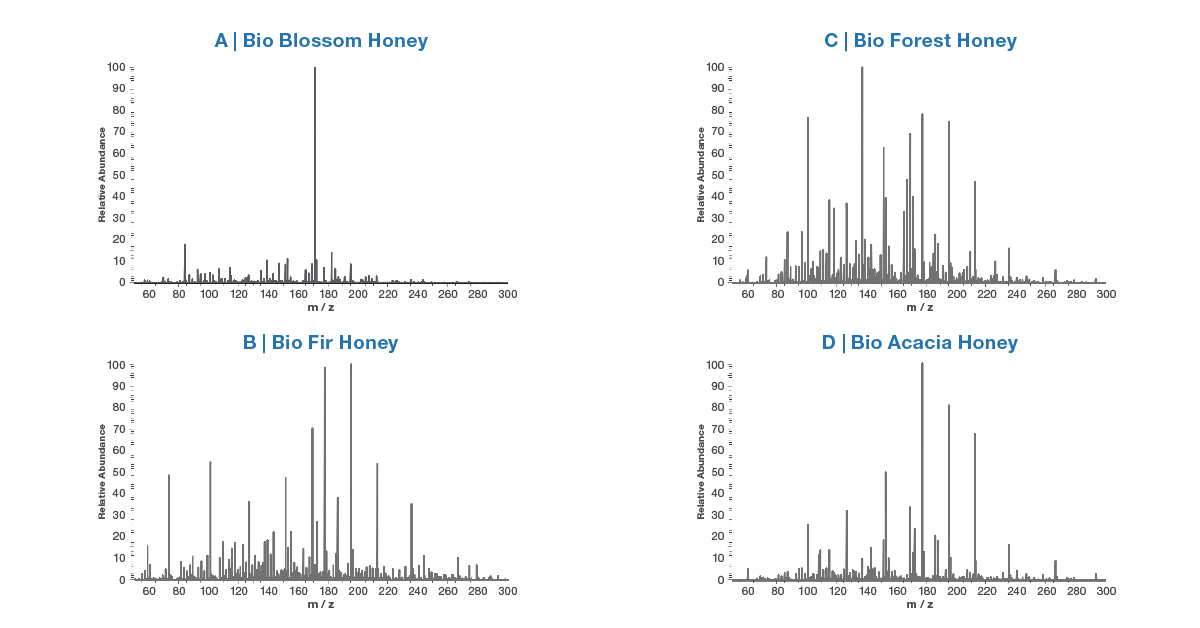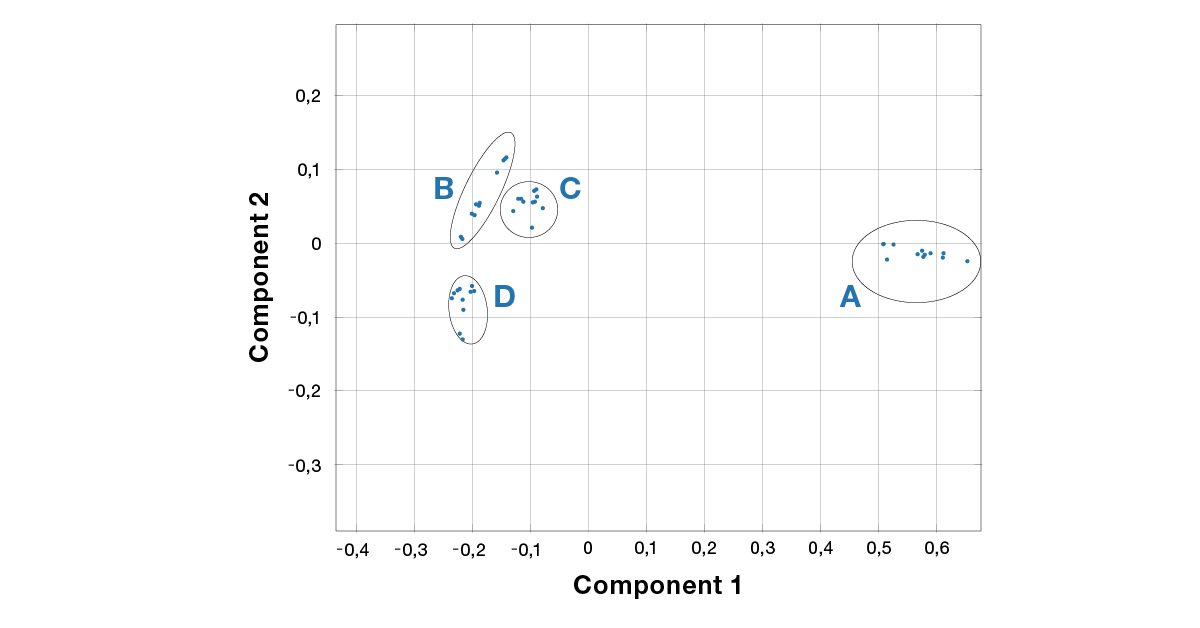
Honey Honey, how you fool me!
Say goodbye to food fraud: A revolution in the food industry
Two tablespoons: That’s the total amount of honey a single bee can produce during its entire lifetime. It’s not surprising that smaller countries, such as Germany, for example, can’t fully meet the demand for this valuable good through domestic production alone. For that reason, a lot of honey is being traded. However, different production origins also bring forth different regulations. In China, the world’s largest honey exporter[1], the manufacturing process is often expedited for the sake of efficiency. To preserve—or more accurately, imitate—the qualities of genuine honey, numerous companies dilute their products with sugar syrup, conveniently omitting this information for importers and end consumers[2]. Aside from the fraudulent nature of such practices, this concealment of ingredients can have severe consequences for individuals with allergies.
[1] Statista (2023) https://de.statista.com/statistik/daten/studie/1138975/umfrage/die-wichtigsten-exportlaender-fuer-honig-weltweit/
[2] Spiegel (2022)https://www.spiegel.de/deinspiegel/lebensmittelbetrug-das-geschaeft-mit-dem-gefaelschten-honig-a-50cef905-0002–47b1-a119-08e11158b2c4
Food Fraud – A menace for companies and consumers
Food fraud incidents appear in the media over and over again. Global flows of goods and highly branched supply chains increase the opportunity to act fraudulently. As numerous as the options are, the damage to the industry is equally high. The consequences in terms of customer trust are dramatic!
The EU estimates the annual damage caused by food fraud at more than 30 billion euros – comparable to the heroin trade on the black market.[1] But the fraud cases are too diverse to carry out cost-effective tests. Experts estimate that ten percent of our food is affected by food fraud.[2] Virgin olive oil is replaced with dyed salad oil, stretched with cheaper oils, or false claims are made regarding its origin. Shrimps are sprayed with gel and alcoholic beverages adulterated – food fraud is omnipresent nowadays.
On the other hand, customers’ awareness regarding food quality and consumption is increasing. One of the main concerns of consumers is that they are being misled about the true quality of their food. This quality awareness again leads to massive pressure on the food industry because the expectations of the end consumers are growing. In addition, the increased transparency is leading to a zero-failure tolerance. Therefore, the challenges are more numerous and preserving the customers trust is more important than ever.
In this context, companies must ensure to meet the expectations of their customers regarding transparency and declaration of their products and need to avoid publicity scandals that might even be rooted in their highly branched supply chains.
[1] Spiegel (2021): https://www.spiegel.de/wirtschaft/service/betrogene-verbraucher-milliardengeschaefte-mit-lebensmittelbetrug-spiegel-tv-a-7b938b3d-840f-426d-bba0-5bf07654bf74
[2] Statista (2021): https://de.statista.com/statistik/daten/studie/1196049/umfrage/hauptsorgen-bei-lebensmittelbetrug-in-eu-und-deutschland/
But how can manufacturers and suppliers protect themselves from food fraud?
Using the HaVoc® Sensory System, the lowest levels of impurities or deviations from the original product can be detected in real-time on the basis of volatile organic compounds. This technology, developed by Plasmion GmbH, for the first time enables analytical devices (mass spectrometers), which until now have only been used in laboratories, for industrial applications from residue analysis to real-time process control: Special attention is paid to ease of use, intelligent use of technology, and precise results.
This technology is able to analyze honey from different plant origins which reveals differences in their VOC profile


Similarities and differences in the VOC profile can then be used to assess the kind and origin of the honey. But in this case more importantly, it allows to spot impurities and judge the authenticity of honey products.
This example shows, how the HaVoc® Sensory System can prevent food fraud and enable quality-based incentives for suppliers by assessing the authenticity of a product based on instantaneous database matching.
